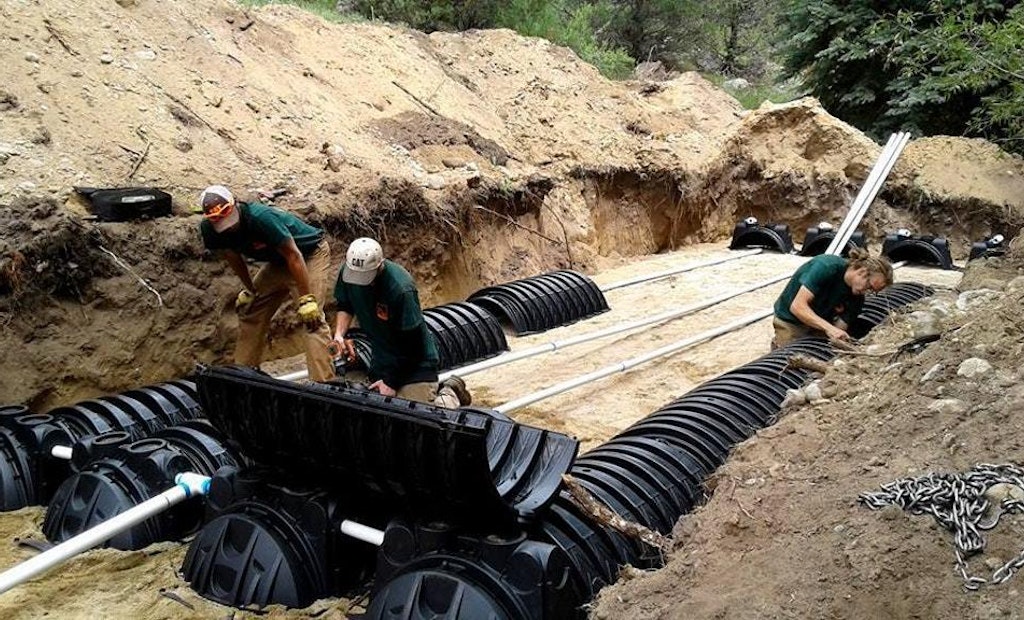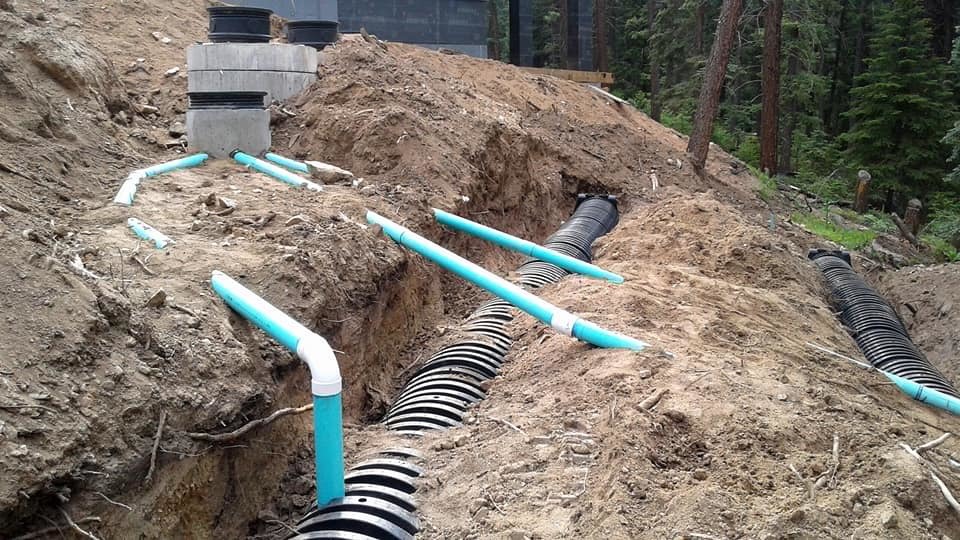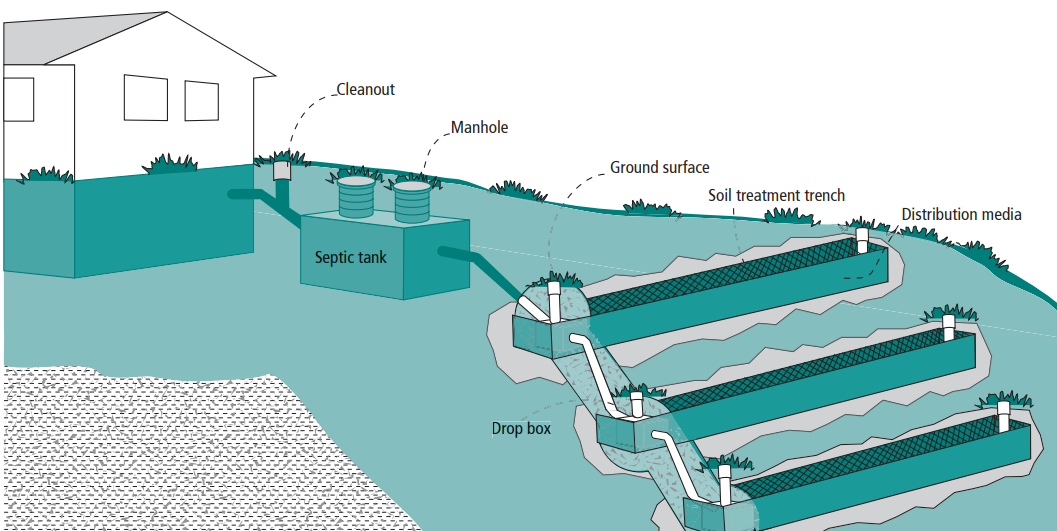Interested in Onsite Systems?
Get Onsite Systems articles, news and videos right in your inbox! Sign up now.
Onsite Systems + Get AlertsIn many parts of the U.S. septic professionals face the challenge of steep slopes during system installation. When working on sloping sites, safety is the primary concern.
When installing soil treatment areas (STA) on sites with significant slopes, care must be taken to ensure the safety of the operator and laborer while achieving a level excavation. Be sure to check with your equipment manufacturer regarding the equipment’s slope limitations. Check your local codes for maximum slope installation requirements.
Piping
For the sewer line from the house to the septic tank the goal is to have the wastewater flow at a rate of 2 feet per second. If waste flows in the sewer line faster than 2 feet per second, the risk is that water leaves the solids behind in the pipe and causes clogging. On sites with very steep slopes from the structure to the first tank, a slope break may be needed in the pipe to significantly drop the pipe elevation. It is recommended to use smooth drainline connection with hubless drainpipe connections to limit solids being caught in the pipe. In these installations, a clean-out should be installed due to the potential for obstructions.
Soil treatment concerns and equipment choices
Since the bottom of the excavation must be level, care must also be taken that the upslope side of the system does not get too deep in the ground. The installer must identify the elevation(s) of the bottom of the trench or bed in relation to the limiting condition before construction begins. These elevations are then used throughout the excavation of the trenches to ensure the required separation is maintained.
No matter what method is used to install the system, it’s critical to maintain the required vertical separation and in some instances the installation can only be performed by hand. If tracked equipment is used, you will need a pad to dig a level excavation. Wheeled backhoes can self-level using stabilizers. The construction techniques for these sites are greatly impacted by the depth of soil available for excavation. If you have a deep soil profile for sewage treatment you can make a bench by cutting out soil on the upslope of the first trench and placing the excavated material downslope to create a bench for the second trench excavation.
If a shallow system (less than 24 inches from grade) is installed, cutting a bench into the site is difficult if not impossible. On these sites, the installer typically takes the soil from the first trench to create a bench for the second trench down the hill slope. It is often necessary to angle the machine upslope and use stabilizers to prevent it from tipping over. A better option for these sites may be the use of a mini-excavator placed perpendicular to the slope, where the blade is used to support the machine. Soil from the excavation can then be used to create a bench.
Distribution options
With low-pressure pipe distribution to the STA the laterals all must be level, or the design must account for the differences in elevation. Typically, a gate valve will be used to equalize the flows for the lines at lower elevation.
With drip distribution, pressure-compensating emitters are best suited for slopes as they will equalize the flow for the varying elevations. Pressure-compensating emitters have an internal means of increasing the friction within the emitter, thus increasing friction loss and maintaining a uniform emission rate.
If a gravity trench system is being installed, drop boxes will likely be the best method to step-down the slope. With drop box distribution septic tank effluent flows into the first trench until effluent has ponded and the trench reaches capacity. Then, the effluent flows into the second trench until it, too, reaches capacity, then into the third. The first trench should be at capacity before effluent is delivered to the second trench. Effluent flows through a watertight pipe from the septic tank to the first drop box. An outlet, near the bottom of the drop box, connects to the distribution pipe of the trench. Another outlet near the top of the drop box connects to a watertight pipe leading to the drop box of the lower trench.
Aside from the order in which effluent reaches them, the trenches function independently, each receiving effluent at the rate it is accepted in that trench. If one is draining more slowly than the others, perhaps because it’s in less permeable soil, it will accept less effluent. If one tends to drain quickly, perhaps because it receives more sunlight on the surface and more water is lost through evaporation in the warmer months, it will receive more effluent. Since the trenches are not directly connected, there is no hydraulic head from trench to trench — effluent does not move more quickly into or through the second or third trenches because they are downhill from the first one.
Steep slopes can be challenging but if care is taken during the installation a long-term sustainable solution can be installed.
About the author: Sara Heger, Ph.D., is a researcher and educator in the Onsite Sewage Treatment Program in the Water Resources Center at the University of Minnesota, where she also earned her degrees in agricultural and biosystems engineering and water resource science. She presents at many local and national training events regarding the design, installation and management of septic systems and related research. Heger is the President of the National Onsite Wastewater Recycling Association and she serves on the NSF International Committee on Wastewater Treatment Systems. Ask Heger questions about septic system design, installation, maintenance and operation by sending an email to kim.peterson@colepublishing.com.








